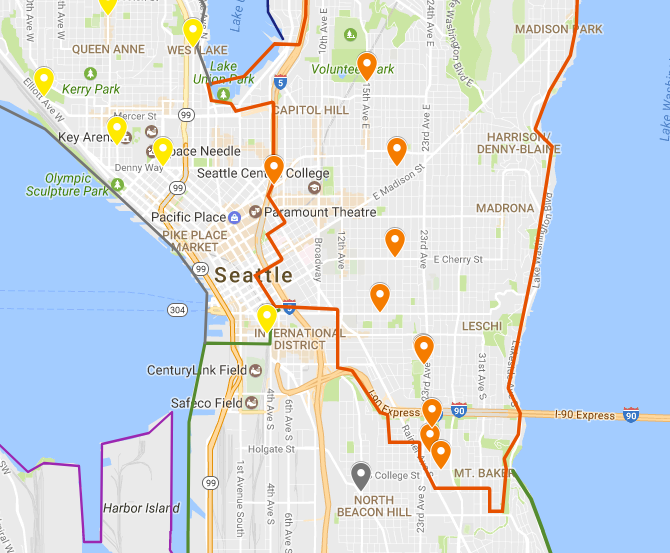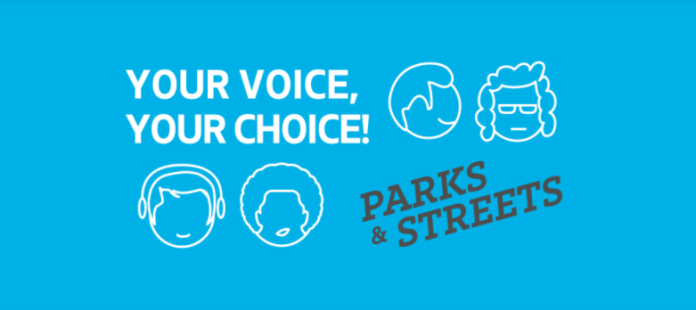Seattle’s first citywide experiment in participatory budgeting starts tomorrow as polls open for the Your Voice, Your Choice park and street grant competition. In February, over 900 ideas were submitted for improvements that neighborhood residents would like to see in their parks and on their local streets. A big majority of the improvements submitted were in the right-of-way, suggesting a huge desire for Seattle residents to see their streets become safer, more people-centric places.
Ultimately the city will be spending $2 million on the projects, which can cost up to $90,000 each. That’s only three per council district, which is how the voting districts are broken down. Each council district had their project list whittled down to 10 projects that will appear on the district specific ballot by neighborhood residents. Each council district had several meetings where neighbors rated the projects in their area based on criteria like need, impact, and equity.
The final project list is notable for a few reasons: there are no projects Downtown, where a very large portion of the traffic collisions in Seattle take place. Dense neighborhoods are not particularly well represented over less dense neighborhoods; this is particularly striking in District 7 where almost all of the projects are in Queen Anne with only one in the International District and one in North Belltown. Do they really reflect need and impact, or simply meeting attendance?

In addition, breaking the city into council districts ignores the fact that the districts are not on equal footing in terms of street and park infrastructure. District 2, South Seattle, currently experiences a hugely disparate impact of traffic violence compared to more affluent districts like 4 and 6. To pretend that all districts are equally in need of valuable street funding is to ignore the Vision Zero data.
However, we have already seen that the participatory budgeting process is a better way to allocate park and street funds than the insular neighborhood district council process. It gets more neighborhood residents involved in thinking about problems and solutions in their neighborhood.
Voting will be available online from June 3rd through June 29th, with projects to be implemented next year.
Ryan Packer has been writing for The Urbanist since 2015, and currently reports full-time as Contributing Editor. Their beats are transportation, land use, public space, traffic safety, and obscure community meetings. Packer has also reported for other regional outlets including BikePortland, Seattle Met, and PubliCola. They live in the Capitol Hill neighborhood of Seattle.


